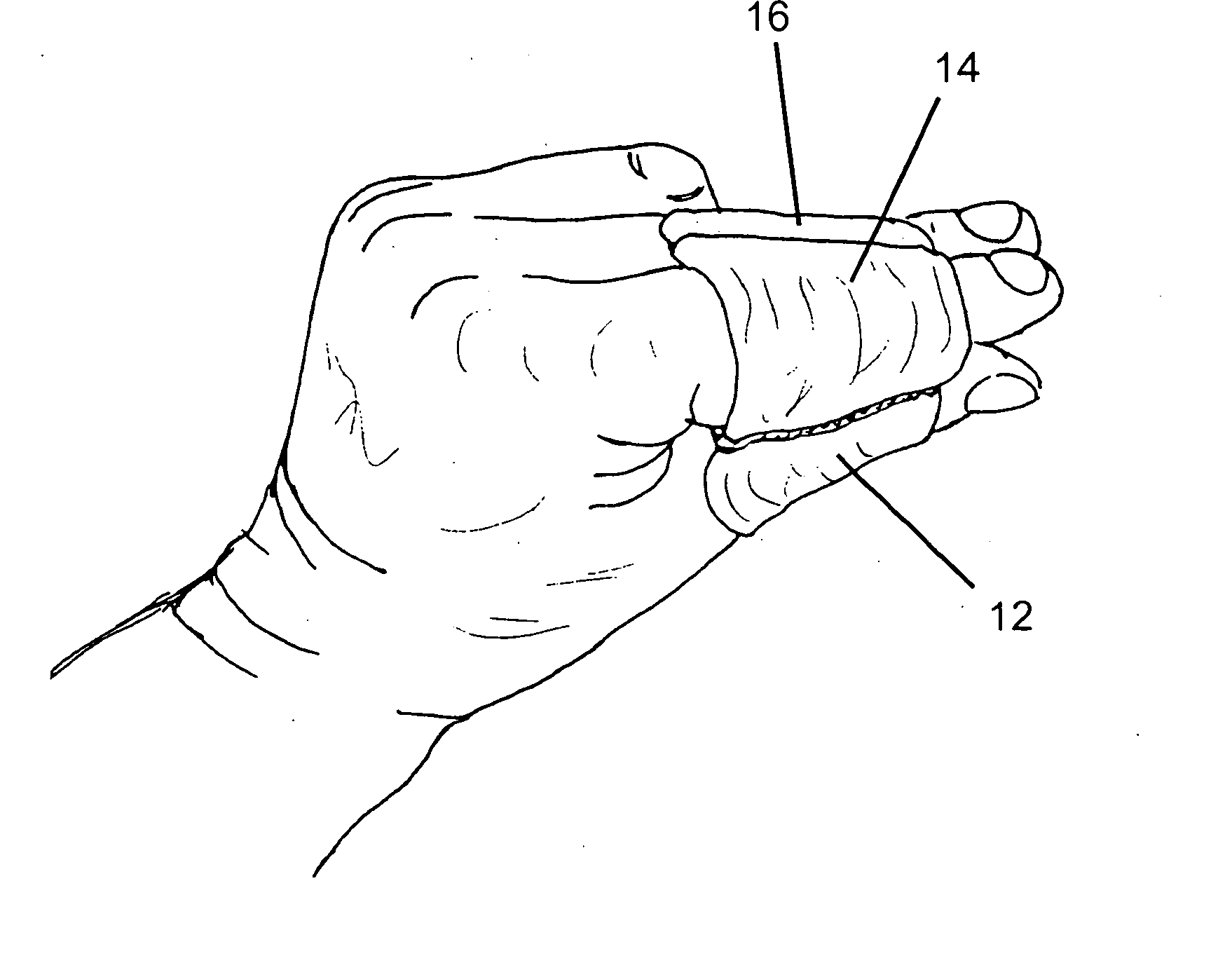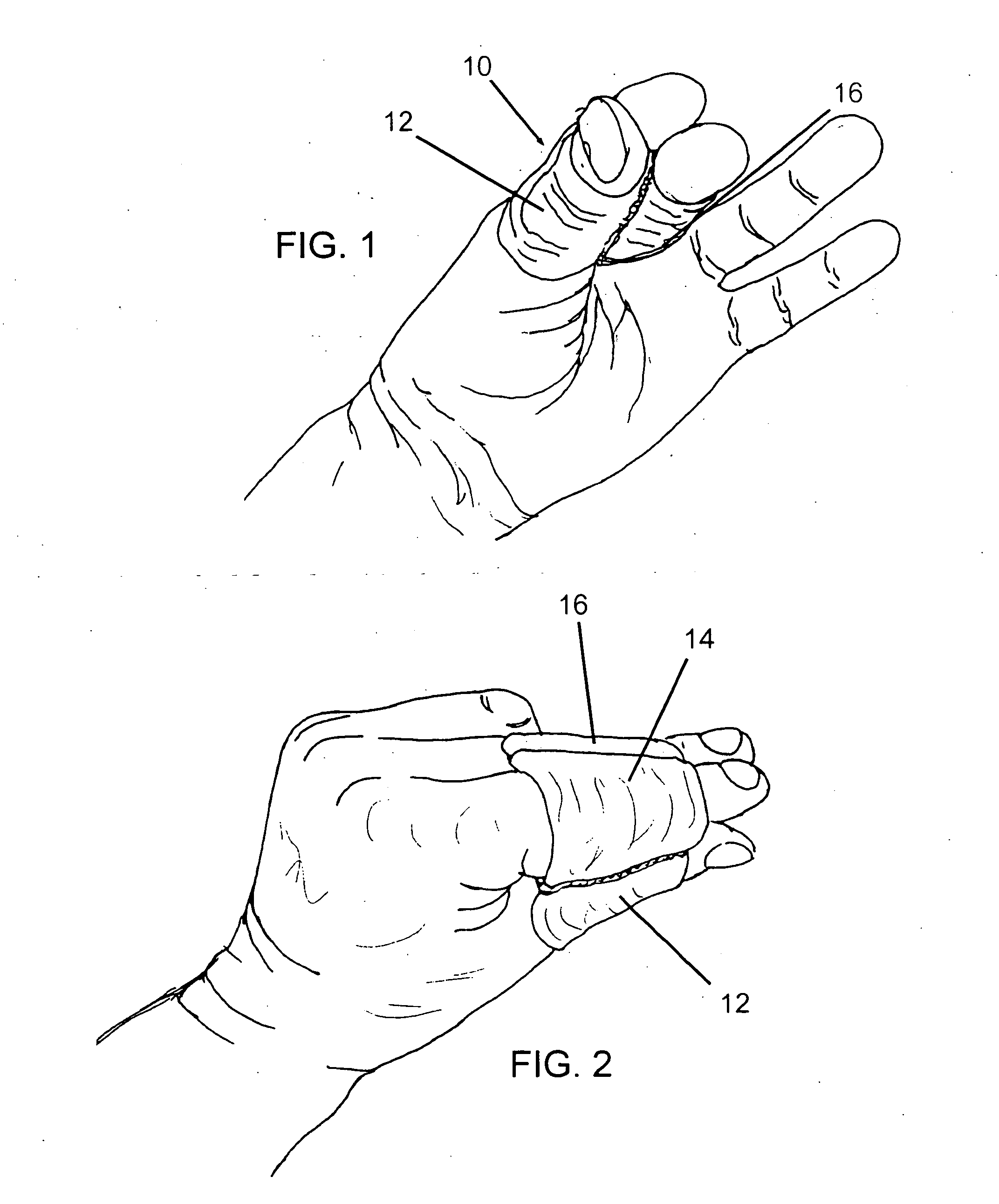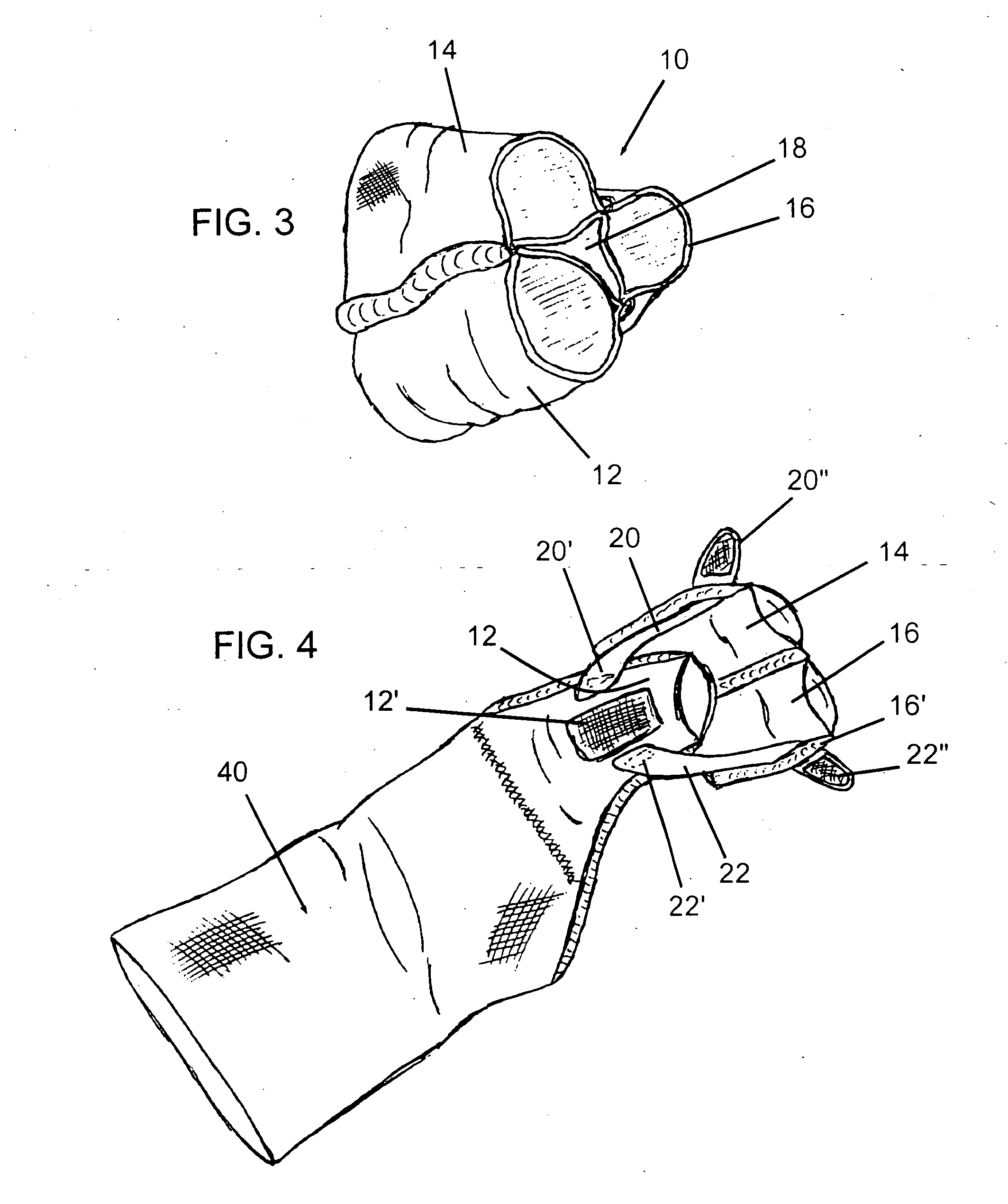Digit-supporting therapeutic device for the hand
a technology of supporting device and hand, which is applied in the field of hand-supporting therapeutic device, can solve the problems of preventing the digits from easily holding, cumbersome and bulky, etc., and achieves the effects of reducing force during tool use, simple and yet effective method of configuring and supporting fingers, and facilitating the use of tools
- Summary
- Abstract
- Description
- Claims
- Application Information
AI Technical Summary
Benefits of technology
Problems solved by technology
Method used
Image
Examples
Embodiment Construction
[0027] Referring now to the drawings in greater detail, and in particular to FIGS. 1-10, for now, there is shown the first embodiment of the digit-supporting therapeutic device for a hand of the invention. The device 10 consists of three separate sleeves: A first thumb-sleeve 12, an index-finger or forefinger-sleeve 14, and a middle-finger sleeve 16, as best seen in FIG. 3. Each sleeve is preferably made of a flexible and stretchable fabric or material, such as spandex, nylon, or the like, and are sewn or otherwise fixedly secured together along adjacent edge-surfaces, as clearly seen in FIG. 3. The sleeves are arranged so as to allow the thumb-sleeve 12 to be positioned in opposition to the two finger-sleeves 14, 16 when the device 10 is worn on the fingers of a hand, in a manner depicted in FIGS. 1 and 2. The flexible stretchable nature of the sleeves allows the thumb to be separated from the combined two opposed fingers, such that, the greater the distance the thumb-sleeve is mov...
PUM
 Login to View More
Login to View More Abstract
Description
Claims
Application Information
 Login to View More
Login to View More - R&D Engineer
- R&D Manager
- IP Professional
- Industry Leading Data Capabilities
- Powerful AI technology
- Patent DNA Extraction
Browse by: Latest US Patents, China's latest patents, Technical Efficacy Thesaurus, Application Domain, Technology Topic, Popular Technical Reports.
© 2024 PatSnap. All rights reserved.Legal|Privacy policy|Modern Slavery Act Transparency Statement|Sitemap|About US| Contact US: help@patsnap.com










